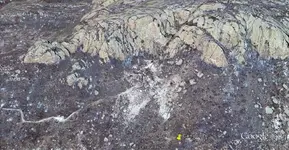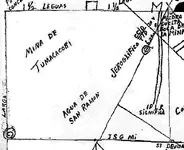sailaway
Hero Member
- Joined
- Mar 2, 2014
- Messages
- 623
- Reaction score
- 816
- Golden Thread
- 0
- Primary Interest:
- All Treasure Hunting
Here we have an example of Mayans writing in Nahuatl in 147 B.C.The Kaminal Juyú Stela
There is 6 Alligator (Cipactli) and just below on row 5 is 10 Rabbit (Toxtli). These dates compute to 13 January 147 BC Julian, 7.10.9.11.1 Long Count, 6 Alligator 4 Yaxkin; and 9 June 147 BC Julian, 7.10.10.0.8, 10 Rabbit, 11 Yaxkin. The 6 Alligator and 10 Rabbit dates repeat every 260 days. There are two more date glyphs in positions C7 and D7. This date is more obtuse. The lower half of position D7 is the day glyph Wind. No date number is apparent so it could be assumed that it is 1 Wind. That would be the date 21 October 147 BC Julian, 7.10.10.7.2 Long Count, 1Wind, 0 Sip. The upper glyph in position D7 is the knotted cloth glyph so someone is acceding to the throne. Could this be the earliest glyphic evidence to date of the Long Count notation in Mesoamerica?
The two date glyphs, 6 Alligator and 10 Rabbit written in the Nahuatl style not the Maya style. Following these two dates are two glyphs which translate to “death arrived.” After the two deaths by fire, there is the accession symbol. The glyph below the accession glyph is the date 1 Wind which is modified by the winal glyph to the left to become the 8 Wind glyph. Starting with the acceding event, the glyphs in positions D8 and C8 mean “first born son.” In Maya tradition, the next king is selected by primogenitary – the first born male closest to the king that is passing on. Then we have Le-ma-hi which we would call Limhi.
Land of Nephi: Every king needs a land – Limhi’s was Nephi, before they fled back to the Zarahemla area with rescuer Ammon and settled in Ammonihah. Nahua is the Nahuatl word meaning the number four. Nahua is Nephi in the Nahuatl language (Nephite language). Nephi was Lehi’s fourth son. Among the Quiché it is Nihai
Last edited:













